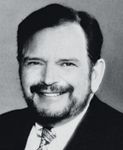- Acne
- Actinic Keratosis
- Aesthetics
- Alopecia
- Atopic Dermatitis
- Buy-and-Bill
- COVID-19
- Case-Based Roundtable
- Chronic Hand Eczema
- Chronic Spontaneous Urticaria
- Drug Watch
- Eczema
- General Dermatology
- Hidradenitis Suppurativa
- Melasma
- NP and PA
- Pediatric Dermatology
- Pigmentary Disorders
- Practice Management
- Precision Medicine and Biologics
- Prurigo Nodularis
- Psoriasis
- Psoriatic Arthritis
- Rare Disease
- Rosacea
- Skin Cancer
- Vitiligo
- Wound Care
Article
First, look before you inject
Miami Beach, Fla. — "Make sure you really see what you're looking at." A point that might well be called the "Klein Oath" for all cosmetic procedures, was what Botox pioneer Arnold W. Klein, M.D. repeatedly emphasized as he addressed the topic "Botulinum Toxin Type A 2004: My Perspective" at the H & H Dermatology Seminar here.

Dr. Klein, who is professor of medicine and dermatology at the David Geffen School of Medicine, University of California, Los Angeles, offered numerous "pearls" from his 10 years of experience with the popular paralytic.
Reminding those assembled that the purpose of Botox is to improve, not immobilize, its target, Dr. Klein discussed the basic principles of aesthetics and anatomy and urged physicians to carefully assess each patient. He also highlighted areas of the face other than the forehead and around the eyes where he considers Botox to be most - and least - effective.
First, he says, the physician must look carefully at his patient to assess the "before" picture objectively.
"It's very important to look at people! First, notice pre-existing asymmetries and other irregularities. For example, often the right brow of right-handed people is higher than the left brow. You also have to be sure you're dealing with normal, not tattooed, eyebrows," he points out.
Dr. Klein also suggests physicians make patients aware of such observations, lest patients mistakenly blame the procedure.
He also notes that the physician should be aware of how others see the face and the aesthetic issues involved - particularly the importance of eyebrow position.
"Without a doubt, the eyes and lips are the most important focal points of the face. And the aspect of the eyes with which you convey emotion, is your eyebrows. It is for that reason that properly positioning the brow - even more than getting rid of the frown - is what Botox is all about," he maintains.
Dr. Klein cautions practitioners to remember that there is a delicate balance between improving the appearance of the forehead and creating an unattractively heavy brow. And the difference, he says, boils down to knowing which muscles are involved and using proper dosing.
"It is critical to understand what muscles you're dealing with."
Noting that it is always better to raise than lower the brow, Dr. Klein says, "To elevate the brows, the portion of the face you're dealing with is the lower 2.5 cm to 4 cm of the forehead. Most of all, remember that when treating the frown, don't over-treat the frontalis muscle; that leads to brow ptosis."
Beyond the frown Contrary to some of his colleagues, Dr. Klein says he does not consider Botox effective for either raising the tip of the nose or treating the nasolabial fold. In the case of the latter he says, "I find it elongates the lip - it just doesn't work."
But the neck and apple dumpling chin are areas he believes respond well to proper Botox treatment.
"I can get rid of that apple dumpling chin by putting 5 to 10 units of Botox - straight up under the chin," he says.
He has also had great success in treating the platysma, but warns against causing weakness in the neck by using too much or injecting it too deeply. To avoid that possibility, he performs the procedure in two stages
Newsletter
Like what you’re reading? Subscribe to Dermatology Times for weekly updates on therapies, innovations, and real-world practice tips.















